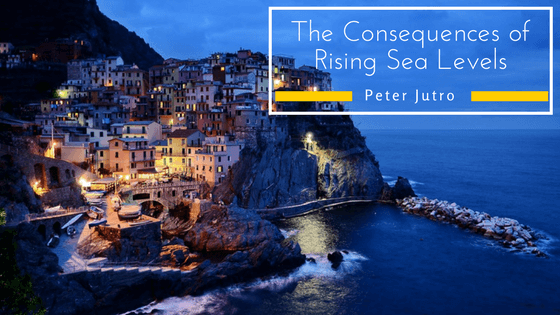These days, unless an environmental issue is presented on a scale such as that depicted in doomsday movies (think oceans swallowing cities or asteroids crashing into the Earth), it can be easy to ignore or dismiss. Rising sea levels are a direct effect of climbing year-after-year temperatures. You’ve probably been to a beach that looks a little different than it did a few years ago due to flooding and erosion. When the only things that stands in the way of you and the beach you remember are what appear to be some seemingly minor aesthetic changes, rising sea levels may not seem like such a pressing issue. The key issue, however, is in the nature of how we perceive sudden disasters as opposed to how we perceive slow disasters.
The truth of the matter, whether you choose to be concerned by it or not, is that sea levels are rising as a result of climate change. Scientists have found that the Global Mean Sea Level (GSML) has risen 4 to 8 inches over the last century. This measure is derived from comparing core samples, tide gauge readings, and satellite images. Rising sea levels are a direct consequence of global warming, as the oceans absorb about 80 percent of the heat the Earth emits, and when water heats up, it expands. About half of the last century’s sea level rise can be attributed to the oceans taking up more volume, while the rest is caused by melting glaciers and polar ice caps, as well as accelerated melting of the icecaps covering Greenland and West Antarctica.
To give an idea of just what rising sea levels mean for the world and why we should be concerned, it is important to focus on the economic and social consequences. It’s more than beaches and some marine life at stake; entire cities and communities are at risk of becoming lost to the rising tide.
Flooding cities
The dramatic scenes in disaster movies where raging rivers gush through city streets and massive tsunamis crash against the sides of skyscrapers, may, a few weeks ago, have seemed too fantastical to ever happen, but the sobering news showing us images of the tragedies unfolding in south Texas draw us back to reality. If chronic flooding persists at its current rate, those movie scenes may represent a much more common not-too-distant future. Already, more than 90 coastal communities in the United States, including San Diego, California and Norfolk, Virginia are affected by chronic flooding and that number is only expected to grow. In 20 years, National Geographic reports, based on data from the first comprehensive mapping of the entire coastline of the Lower 48 states undertaken as part of a study undertaken by the Union of Concerned Scientists, that number will double and by the end of the century. Chronic flooding will affect as many as 670 coastal cities including Miami and St. Petersburg, Florida; Oakland, California; and Cambridge, Massachusetts. Four of the five boroughs of New York City could have significant areas go under. In addition, both San Diego and Norfolk are the homes of major US Naval installations, and the problem, which was taken extremely seriously by the Department of Defense, serves as one example of how a climate issue can easily become a national security issue.
Tainted water supplies
In addition to the obvious distress of flooding forcing people from their homes and threatening bustling cities, rising sea levels can also affect the salinity and purity of surface and groundwater as saltwater, waste, and chemicals contaminate these freshwater supplies, making them unsafe for drinking. The world is already in the midst of a global water crisis, and rising sea levels will only escalate the problem as demand increases and the availability of safe, potable water supplies decreases.
Disappearing coastlines
Rising sea levels can have devastating consequences for coastal areas in the form of erosion, wetland flooding, soil contamination, and habitat destruction. Higher ocean levels and a warmer atmosphere contribute to more powerful storm surges that can wipe out everything in their path; this can already be seen in Mississippi where the delta is disappearing faster than land anywhere else on earth. In the New England and Mid-Atlantic regions of the United States, where the beaches are eroding approximately 1.6 feet per year, maintenance now requires regular, costly restoration.
It is important, when discussing the relationship between rising sea levels and climate change, not to immediately place 100% of the blame on human activity. If one does, a phenomenon that has a natural component can quickly escalate an already contentious political debate. If we are to combat the threats posed by rising sea levels, what we now we must do is take a careful, scientific look at the reasons behind rising sea levels, and then take measures to prevent the considerable economic and social consequences that will unequivocally occur if no action is taken.

